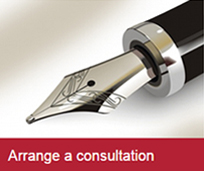Improving Your Life Through Immigration Since 1974
Articles
This page contains articles I have written on immigration-related themes and other articles of interest
Home > Information Bank > Articles
Immigration Lawyer Andy Semotiuk Talks About US Immigration and the H1B Visa
by Canada Immigration on Thursday, October 4, 2012
Anyone who came to the United States in H1B visa status and now wishes to remain by adjusting to permanent residence, knows the exceptional hardships involved with U.S. immigration. These struggles include priority dates and the visa bulletin, particularly for applicants from India, China, Mexico and the Philippines. To some of these immigrants, sometimes it seems like they must remain in non-immigrant temporary status forever and the elusive green card is only a dream.
As if it was not hard enough to obtain a labor certification from the Department of Labor, especially more recently in the face of the 20 million Americans who are unemployed or underemployed, that was only the beginning of the journey. Having gotten their employer to file the I-140 petition to start the immigration process, and obtained approval from the US Citizenship and Immigration Service (USCIS), now the applicants must be careful about running out of status.
Three kinds of mistakes can be fatal
Firstly, an H1B visa holder allows their six-year maximum term of authorized stay to expire without taking steps to extend soon enough.
Secondly, the H1B visa holder has indeed extended their period of authorized stay beyond the six years maximum for one year because a year has passed since the labor certification or the I-140 petition has been filed. They now must extend yearly. Woe be anyone who fails to do so.
Thirdly, the applicant has extended the period of authorized stay beyond six years for another three-year increment by virtue of being ineligible to apply to adjust their status because their priority date is not current. They must extend every three years. Woe be to anyone who fails to do that.
Then there are the complications related to traveling home while waiting for eligibility to adjust. All this can be nerve racking!
Such immigrants must wait in a U.S. holding pattern until their priority date comes due and then they can file to adjust their status inside the United States. Spouses of such H1B visa holders must wait years in H-4 status for adjustment of status so they can also finally go to work. Or must they?
Pace Law Firm has a program to help some of these individuals deal with their temporary U.S. inadmissibility and at least make it easier to achieve their dream of becoming a permanent resident by first moving to Canada. The individuals involved must be executives or managers and work for an employer that either has a branch or subsidiary office in Canada, or would be prepared to open such an office there.
Instead of waiting five, six or more years in a cue, the Pace Law Firm program calls on the employer to send the worker up to Canada to work for the branch office. Often the employee can do the same or similar work to what they have been doing in the United States. The employee is transferred to Canada as an inter-corporate transferee and gets a work visa on that basis. Furthermore, the spouse also gets a blanket work permit. While on the work permit they can travel back and forth to the U.S.
Under the current immigration law, such a worker would be entitled to apply for permanent residence in Canada in two years time under the Canadian Experience Class. It is expected that this qualifying time will soon be shortened to only one year. Thus, from the moment they arrive both the spouses will be able to go to work. They will be able to visit the U.S. as often as they like. And one year later, they will be able to apply for permanent residence. Processing of that application will take about a year to become a Canadian Maple Leaf card (like green cards in Canada,) holder. This provides a back-up option and a level of certainty that the applicants currently do not enjoy.
What about the U.S. application?
Well, apart from the one change of applying from Canada rather than adjusting inside the United States, there is no delay or disruption in the processing of the I-140 petition. When the priority date comes current the applicant simply applies through the U.S. Consulate closest to where they are living in Canada. When they are approved they return to the USA for landing and receipt of their green cards. The families come with them and get the same status.
In some cases applicants may find that Canada is as good as or even possibly better than the United States for them and their families. They have that option. For those who are set on settling in the USA, they will have exploited an option that brought them certainty, got their spouses out of the house and possible depression by getting them working and speeded up the resolution of their immigration concerns.
We would be pleased to speak to any applicants interested in pursuing this option.
Andy J. Semotiuk is a member of the bars of New York and California in the United States and Ontario and B.C. in Canada. He practices both U.S. and Canadian immigration law with Pace Law Firm.
Andy can be reached at Andy@myworkvisa.com or by calling 416-236-3060
Firstly, an H1B visa holder allows their six-year maximum term of authorized stay to expire without taking steps to extend soon enough.
Secondly, the H1B visa holder has indeed extended their period of authorized stay beyond the six years maximum for one year because a year has passed since the labor certification or the I-140 petition has been filed. They now must extend yearly. Woe be anyone who fails to do so.
Thirdly, the applicant has extended the period of authorized stay beyond six years for another three-year increment by virtue of being ineligible to apply to adjust their status because their priority date is not current. They must extend every three years. Woe be to anyone who fails to do that.
Then there are the complications related to traveling home while waiting for eligibility to adjust. All this can be nerve racking!
Such immigrants must wait in a U.S. holding pattern until their priority date comes due and then they can file to adjust their status inside the United States. Spouses of such H1B visa holders must wait years in H-4 status for adjustment of status so they can also finally go to work. Or must they?
Pace Law Firm has a program to help some of these individuals deal with their temporary U.S. inadmissibility and at least make it easier to achieve their dream of becoming a permanent resident by first moving to Canada. The individuals involved must be executives or managers and work for an employer that either has a branch or subsidiary office in Canada, or would be prepared to open such an office there.
Instead of waiting five, six or more years in a cue, the Pace Law Firm program calls on the employer to send the worker up to Canada to work for the branch office. Often the employee can do the same or similar work to what they have been doing in the United States. The employee is transferred to Canada as an inter-corporate transferee and gets a work visa on that basis. Furthermore, the spouse also gets a blanket work permit. While on the work permit they can travel back and forth to the U.S.
Under the current immigration law, such a worker would be entitled to apply for permanent residence in Canada in two years time under the Canadian Experience Class. It is expected that this qualifying time will soon be shortened to only one year. Thus, from the moment they arrive both the spouses will be able to go to work. They will be able to visit the U.S. as often as they like. And one year later, they will be able to apply for permanent residence. Processing of that application will take about a year to become a Canadian Maple Leaf card (like green cards in Canada,) holder. This provides a back-up option and a level of certainty that the applicants currently do not enjoy.
What about the U.S. application?
Well, apart from the one change of applying from Canada rather than adjusting inside the United States, there is no delay or disruption in the processing of the I-140 petition. When the priority date comes current the applicant simply applies through the U.S. Consulate closest to where they are living in Canada. When they are approved they return to the USA for landing and receipt of their green cards. The families come with them and get the same status.
In some cases applicants may find that Canada is as good as or even possibly better than the United States for them and their families. They have that option. For those who are set on settling in the USA, they will have exploited an option that brought them certainty, got their spouses out of the house and possible depression by getting them working and speeded up the resolution of their immigration concerns.
We would be pleased to speak to any applicants interested in pursuing this option.
Andy J. Semotiuk is a member of the bars of New York and California in the United States and Ontario and B.C. in Canada. He practices both U.S. and Canadian immigration law with Pace Law Firm.
Andy can be reached at Andy@myworkvisa.com or by calling 416-236-3060





